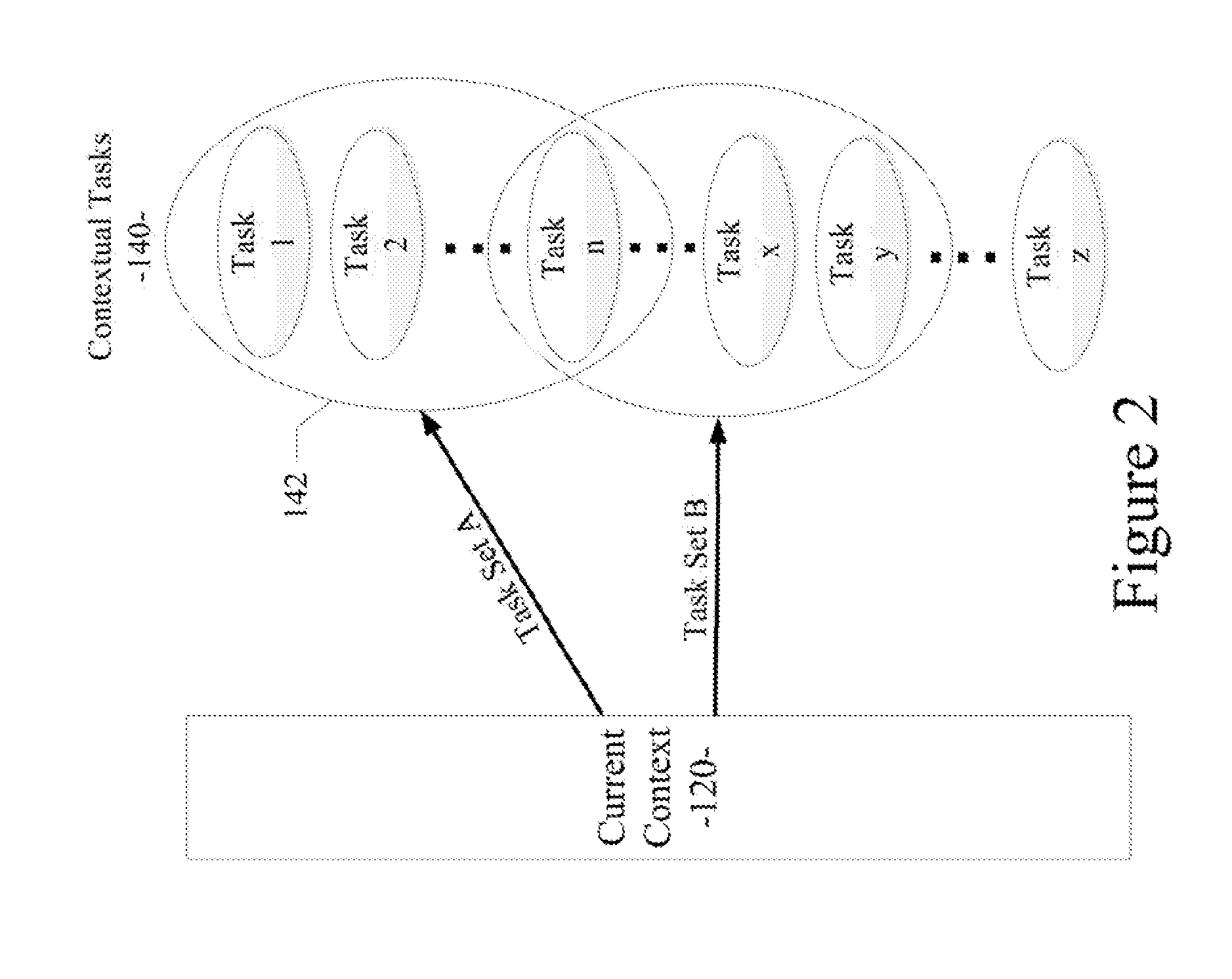Adaptive experience framework for an ambient intelligent environment
an experience framework and intelligent environment technology, applied in the direction of user interface execution, multi-programming arrangement, instruments, etc., can solve the problems of inability to adapt to these dynamical changing environments, inability to integrate and integrate the above processing systems, and inability to respond to the dynamical changing environment. conventional system, inability to react and adapt to the dynamical change environmen
- Summary
- Abstract
- Description
- Claims
- Application Information
AI Technical Summary
Benefits of technology
Problems solved by technology
Method used
Image
Examples
Embodiment Construction
[0034]In the following description, for purposes of explanation, numerous specific details arc set forth in order to provide a thorough understanding of the various embodiments. It will be evident, however, to one of ordinary skill in the art that the various embodiments may be practiced without these specific details.
[0035]As described in various example embodiments, a system and method for providing an adaptive experience framework for an ambient intelligent environment are described herein. In one particular embodiment, a system and method for providing an adaptive experience framework for an ambient intelligent environment is provided in the context of a cloud-based vehicle information and control ecosystem configured and used as a computing environment with access to a wide area network, such as the Internet. However, it will be apparent to those of ordinary skill in the art that the system and method for providing an adaptive experience framework for an ambient intelligent env...
PUM
 Login to View More
Login to View More Abstract
Description
Claims
Application Information
 Login to View More
Login to View More - R&D
- Intellectual Property
- Life Sciences
- Materials
- Tech Scout
- Unparalleled Data Quality
- Higher Quality Content
- 60% Fewer Hallucinations
Browse by: Latest US Patents, China's latest patents, Technical Efficacy Thesaurus, Application Domain, Technology Topic, Popular Technical Reports.
© 2025 PatSnap. All rights reserved.Legal|Privacy policy|Modern Slavery Act Transparency Statement|Sitemap|About US| Contact US: help@patsnap.com



